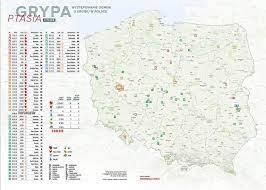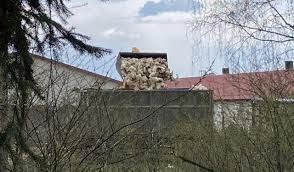According to recent media and OIE reports, Poland has recorded more than 250 individual outbreaks of highly pathogenic avian influenza. Over six million birds have been or will have to be depleted as a control measure. Poland is responsible for the production of 1.3 billion broilers annually representing 20 percent of the E.U. supply of RTC. In previous years avian influenza in the E.U. ceases at the beginning of April but in many nations especially in Eastern Europe, outbreaks have persisted in both backyard and commercial operations.
 It would appear that authorities in Poland have not learned from experience in controlling epornitics as experienced in the U.S. in 2015 and subsequently in Western Europe. Dr. Bodgan Konopki, the Chief Veterinarian of Poland has blamed the severity of the outbreak “on the excessive concentration of poultry farms”. He is campaigning for regulations to require spacing among farms. This is an entirely fallacious approach since avian influenza is introduced by free- living birds and spread by deficiencies in biosecurity. Given inherent defects in conceptual biosecurity due to concentration of facilities, the poultry industry in Poland should intensify biosecurity procedures that have proven to be of benefit in areas with a high density of chicken and egg production. There are obvious deficiencies given the incidence rate and the extent and duration of the problem nationally.
It would appear that authorities in Poland have not learned from experience in controlling epornitics as experienced in the U.S. in 2015 and subsequently in Western Europe. Dr. Bodgan Konopki, the Chief Veterinarian of Poland has blamed the severity of the outbreak “on the excessive concentration of poultry farms”. He is campaigning for regulations to require spacing among farms. This is an entirely fallacious approach since avian influenza is introduced by free- living birds and spread by deficiencies in biosecurity. Given inherent defects in conceptual biosecurity due to concentration of facilities, the poultry industry in Poland should intensify biosecurity procedures that have proven to be of benefit in areas with a high density of chicken and egg production. There are obvious deficiencies given the incidence rate and the extent and duration of the problem nationally.
Recommendations to improve biosecurity are self-evident. These include fencing of farms, biological separation of facilities, eliminating ponds adjacent to facilities that attract free-living birds, investment in structural biosecurity and adherence to operational biosecurity. The statement by Dr. Konopki that ultraviolet from sunlight will eliminate virus and hence outbreaks is wishful thinking and is contradicted by experience in the Middle East that does not lack for either sunlight or high temperature.
 In past years, Poland has expanded both egg and broiler production but with less than optimal attention to biosecurity as evidenced by persistent SE in both broiler and egg products. It is possible that the veterinary infrastructure is politicized and reflects the authoritarian policies of successive conservative governments. This is based on the response to the initial diagnosis of COVID in mink released by the University of Cracow. The presence of the infection on mink farms that was refuted by the Department of Agriculture but then was reversed in the face of incontrovertible proof of infection. Lack of control over national and regional programs to suppress Salmonella infection in poultry has seriously impacted the image of Poland as a reliable supplier of wholesome egg and poultry meat following numerous outbreaks of salmonellosis in the E.U. traced back to exporters.
In past years, Poland has expanded both egg and broiler production but with less than optimal attention to biosecurity as evidenced by persistent SE in both broiler and egg products. It is possible that the veterinary infrastructure is politicized and reflects the authoritarian policies of successive conservative governments. This is based on the response to the initial diagnosis of COVID in mink released by the University of Cracow. The presence of the infection on mink farms that was refuted by the Department of Agriculture but then was reversed in the face of incontrovertible proof of infection. Lack of control over national and regional programs to suppress Salmonella infection in poultry has seriously impacted the image of Poland as a reliable supplier of wholesome egg and poultry meat following numerous outbreaks of salmonellosis in the E.U. traced back to exporters.
Veterinary authorities in Poland would be well advised to consult with their colleague in the U.S. and Western E.U. nations to implement effective poultry health programs including vaccination that will restore the image of their industry and to provide long-term security for producers.